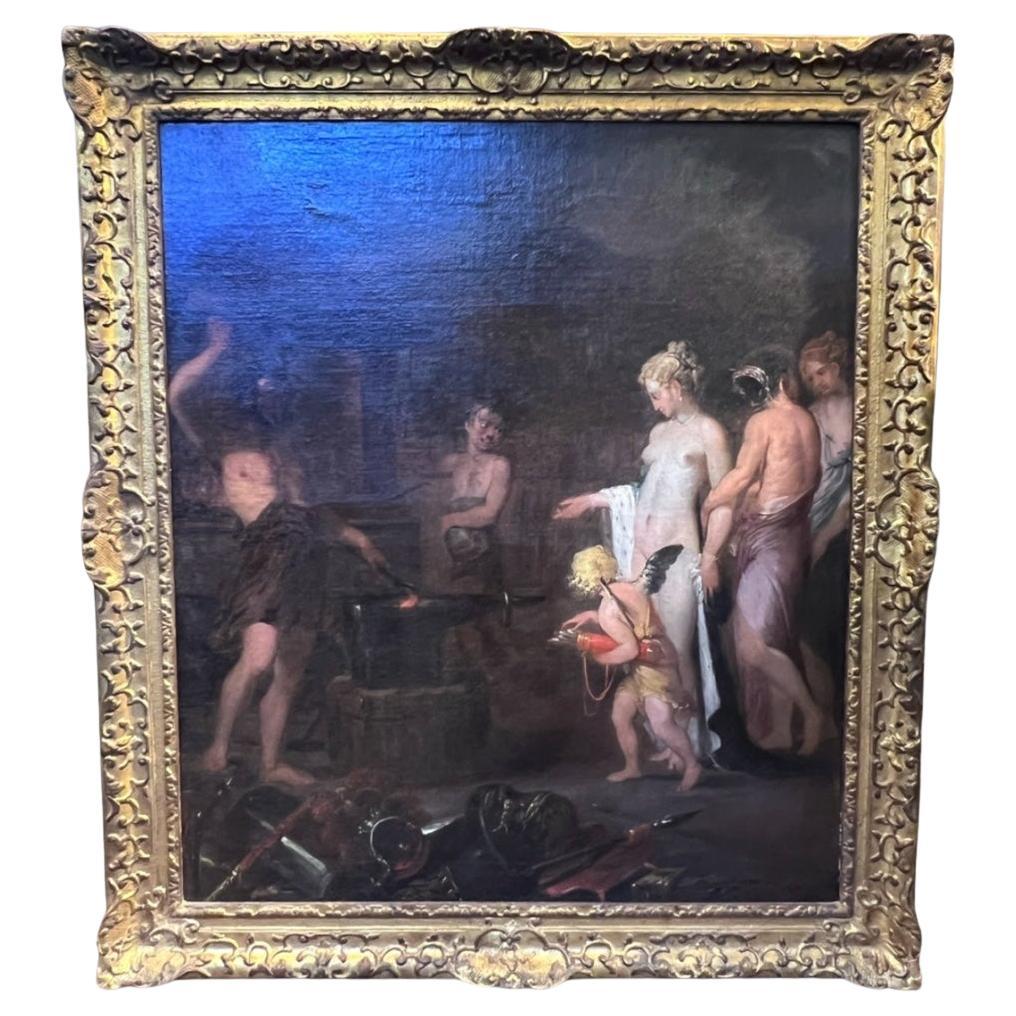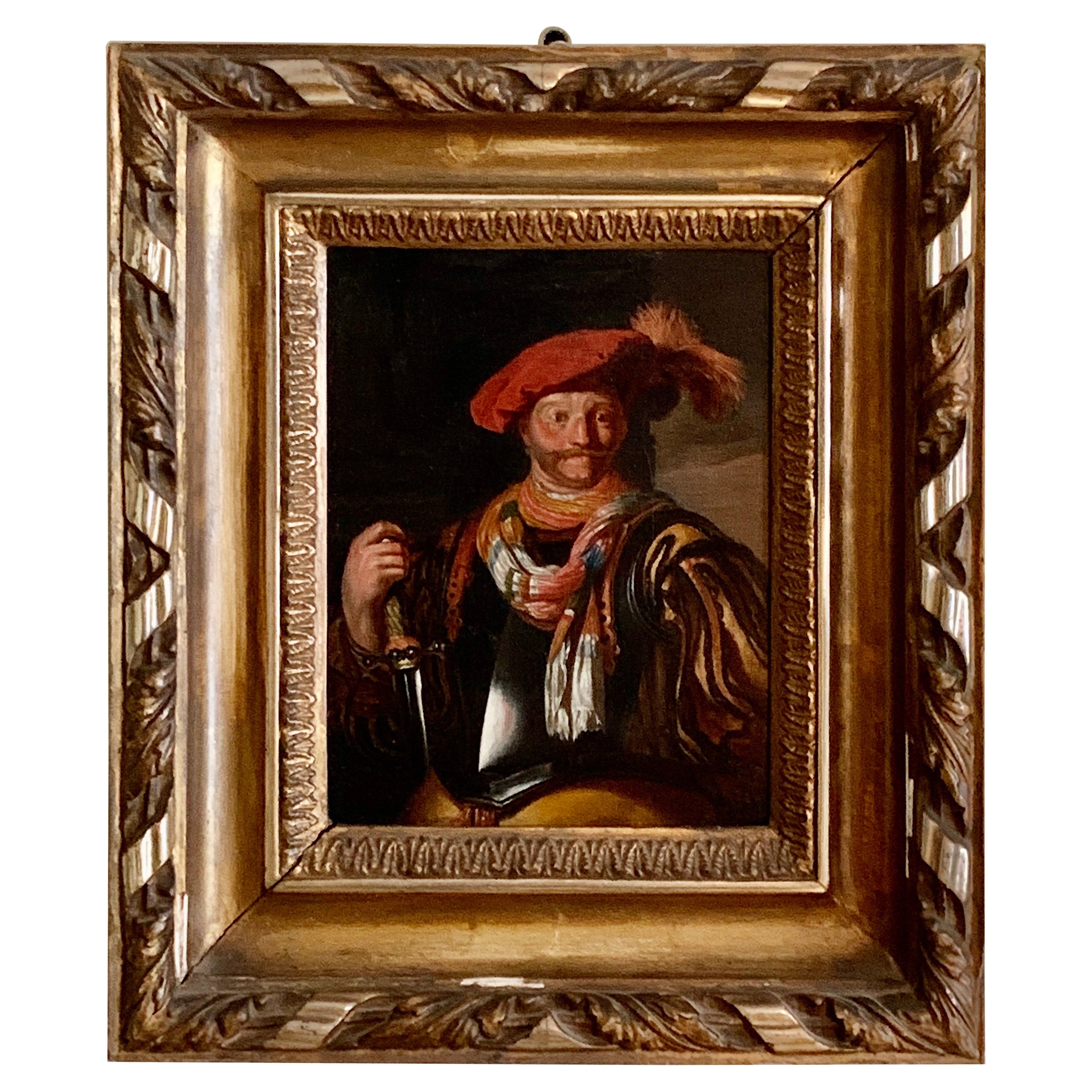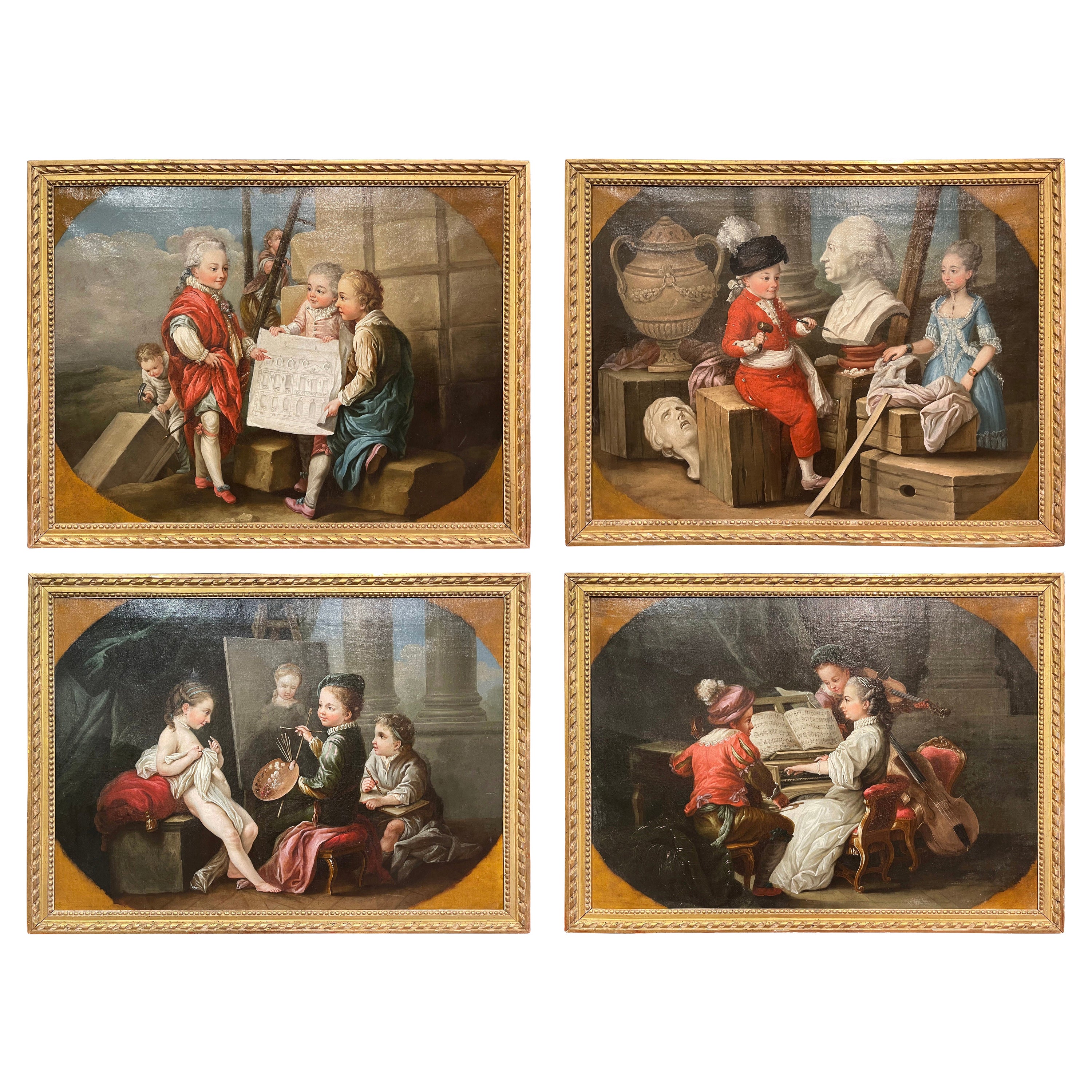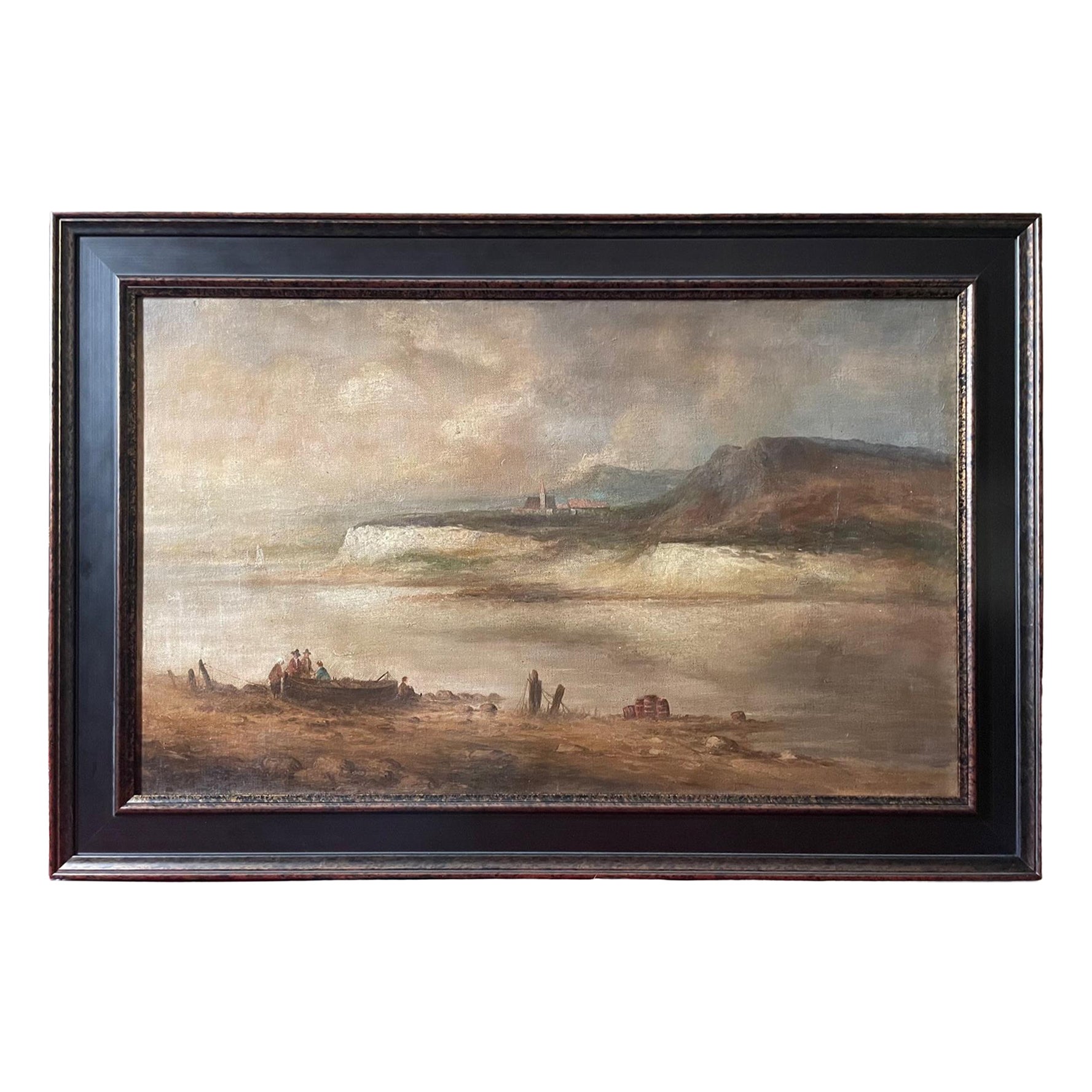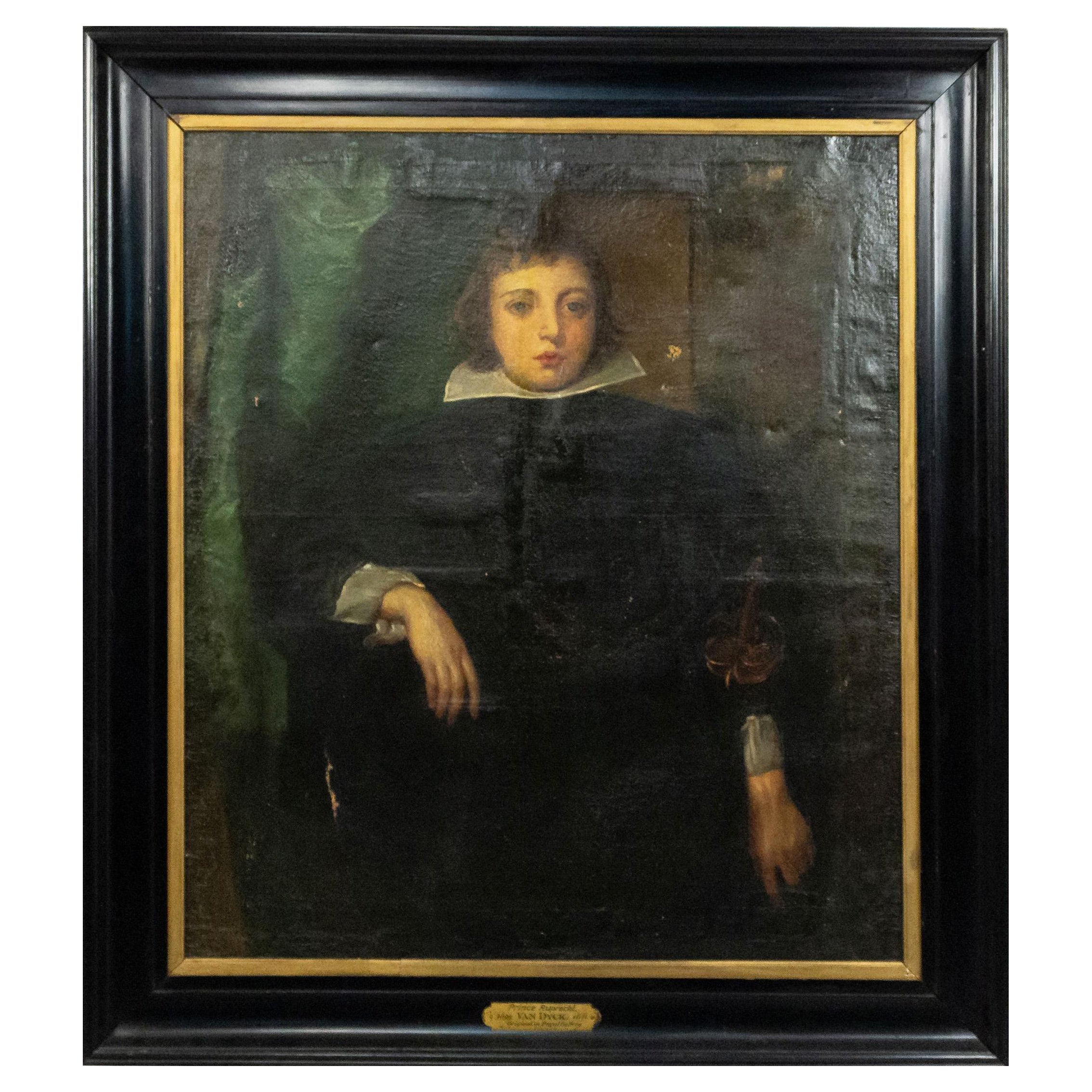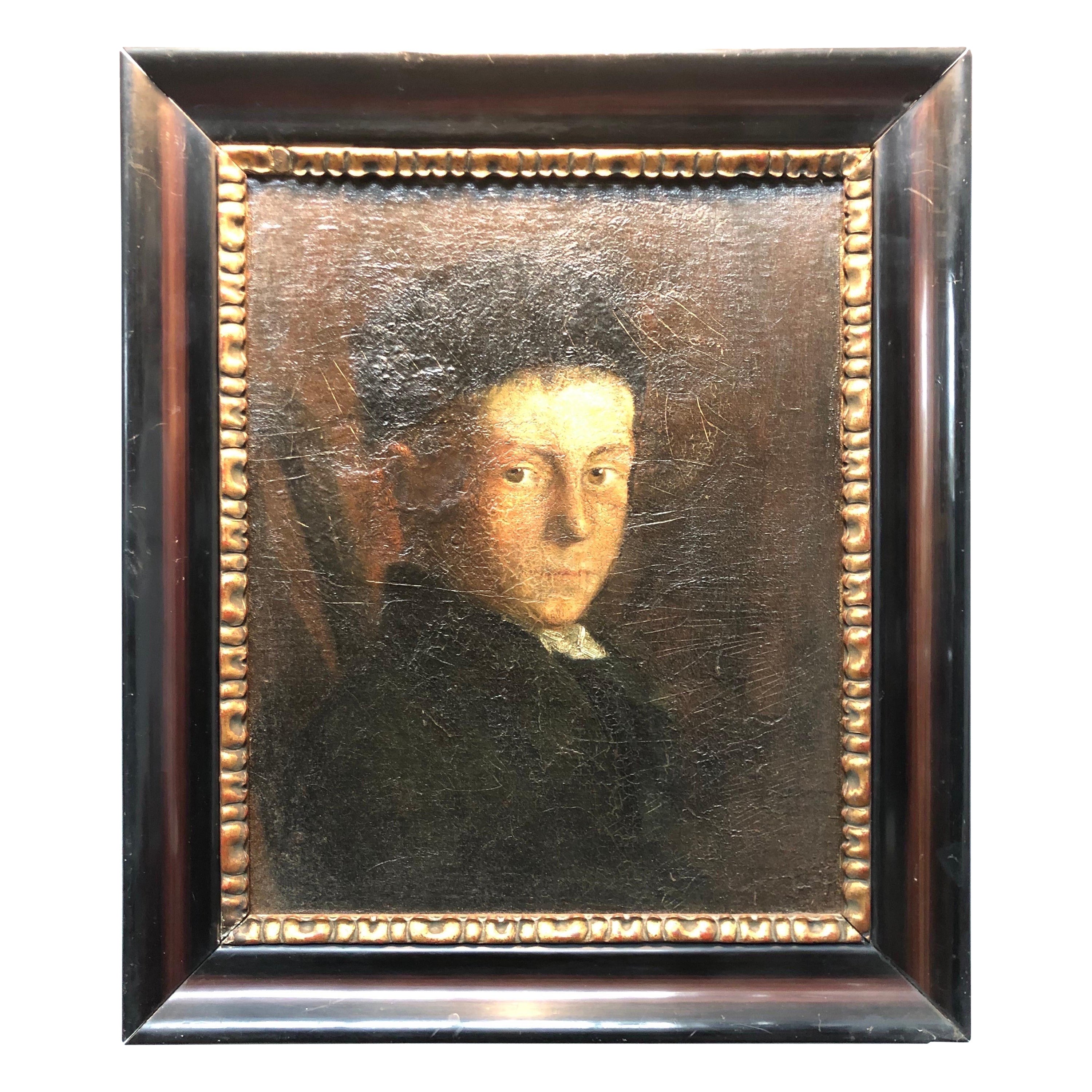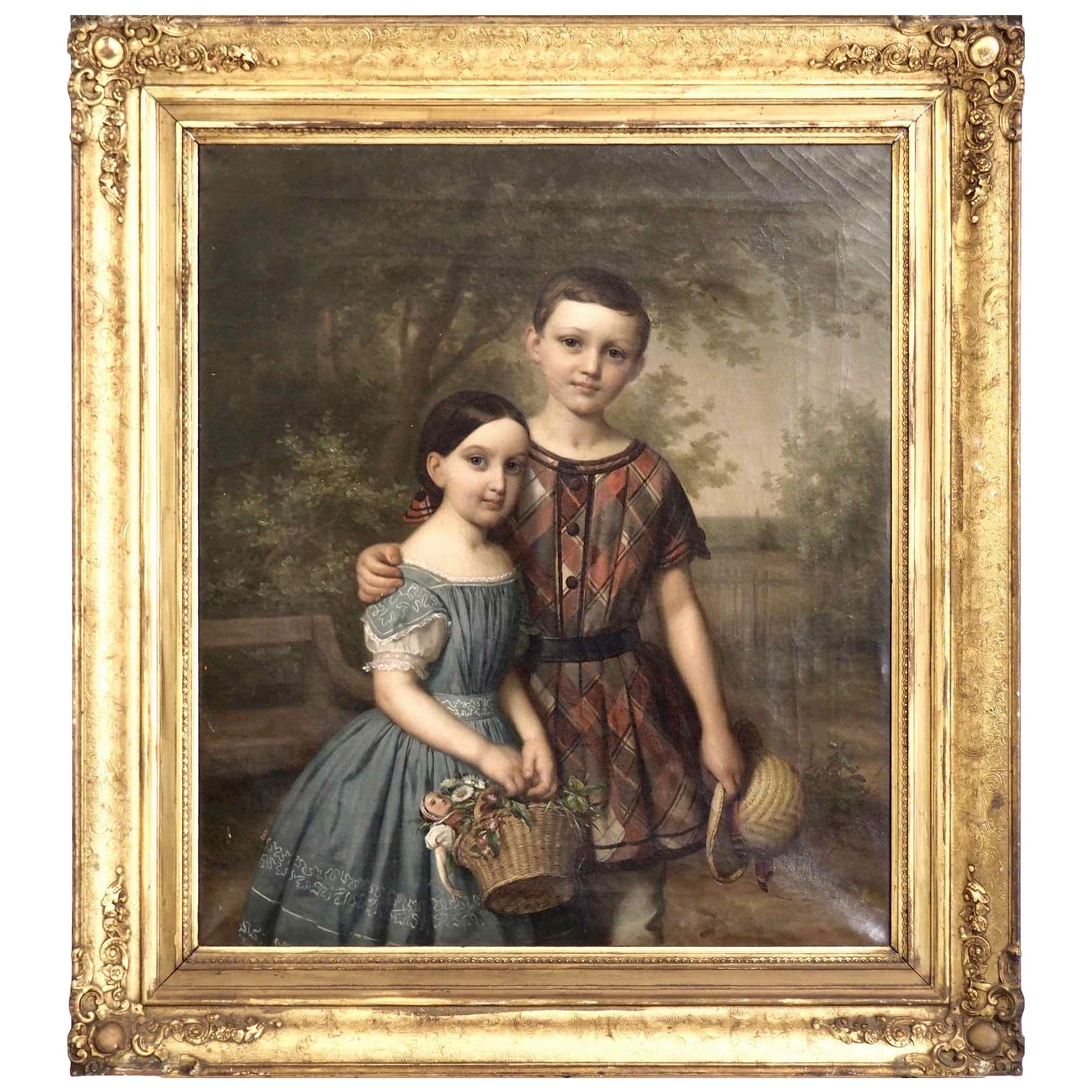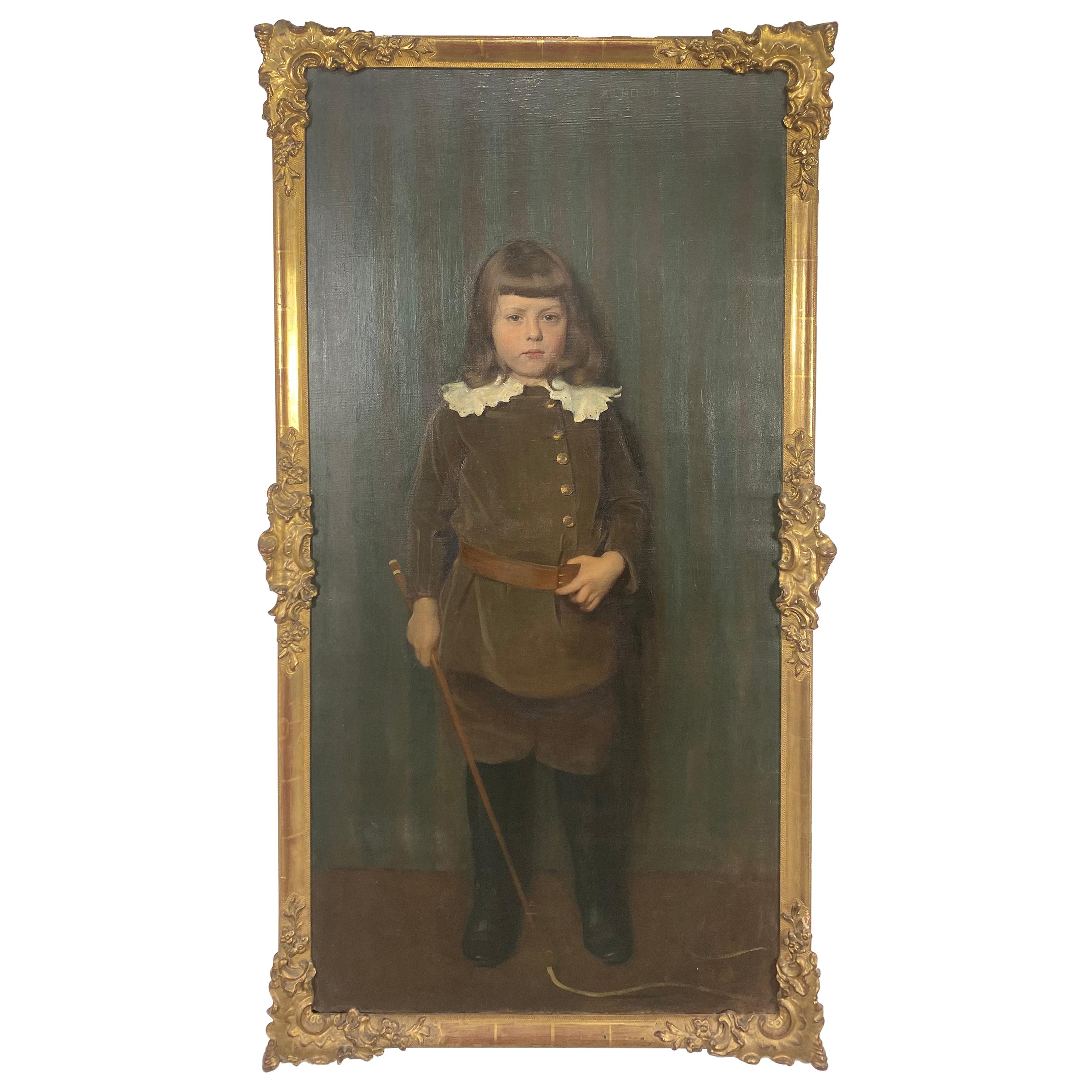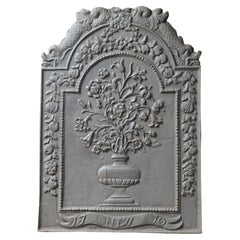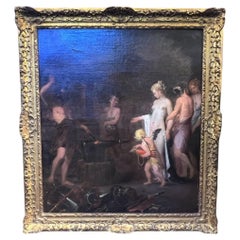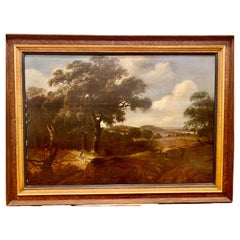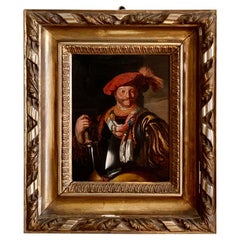
Large Portrait of a Boy, Jacob van Loo '1614-1670', Dutch Master Painting
View Similar Items
Want more images or videos?
Request additional images or videos from the seller
1 of 7
Large Portrait of a Boy, Jacob van Loo '1614-1670', Dutch Master Painting
About the Item
- Dimensions:Height: 60.24 in (153 cm)Width: 45.48 in (115.5 cm)Depth: 2.76 in (7 cm)
- Style:Louis XV (Of the Period)
- Materials and Techniques:Canvas,Oiled
- Place of Origin:
- Period:Late 17th Century
- Date of Manufacture:17th Century
- Condition:Wear consistent with age and use. The paint has some flakes under the pink dress. The frame has some minor damages though as shown in the pictures.
- Seller Location:Amerongen, NL
- Reference Number:Seller: P18G1stDibs: LU973724289562
About the Seller
5.0
Platinum Seller
These expertly vetted sellers are 1stDibs' most experienced sellers and are rated highest by our customers.
Established in 2006
1stDibs seller since 2013
1,268 sales on 1stDibs
Typical response time: 8 hours
More From This SellerView All
- Large Dutch Louis XV 'Flower Basket' Fireback / Backsplash, 18th CenturyLocated in Amerongen, NLLarge, elegant 18th century French Louis XV fireback with a flower basket. The fireback is made of cast iron and has a black / pewter patina. The condition is good. It does not have...Category
Antique 18th Century Dutch Louis XV Fireplaces and Mantels
MaterialsIron
- Large Dutch Art Nouveau Fireplace Grate, Fire GrateLocated in Amerongen, NLBeautifully forged Dutch Art Nouveau fireplace basket or fire basket. The fireplace grate is made of wrought iron and cast iron. This product has to be shipped as freight due to its...Category
20th Century Dutch Art Nouveau Fireplace Tools and Chimney Pots
MaterialsIron, Wrought Iron
- Antique Dutch Fireplace Tool Set, Fire ToolsLocated in Amerongen, NLSet of 18th century Dutch fireplace tools with a hanger. The tools and hanger are made of polished brass. They are in a good condition and fully functional.Category
Antique 18th Century Dutch Louis XV Fireplace Tools and Chimney Pots
MaterialsBrass
- Antique Dutch Fireplace Grate, 18th CenturyLocated in Amerongen, NLFine hand-forged fireplace basket or fire grate made in the Netherlands. 18th century, Louis XV period. The condition is good.Category
Antique 18th Century Dutch Louis XV Fireplace Tools and Chimney Pots
MaterialsBrass, Wrought Iron
- 18th Century Dutch Louis XV Fireplace ShovelLocated in Amerongen, NL18th century Dutch fireplace shovel made of wrought iron. The handle is decorated with polished brass. The item is fully functional and fit for use in...Category
Antique 18th Century Dutch Louis XV Fireplace Tools and Chimney Pots
MaterialsBrass, Wrought Iron
- Antique Dutch Copper Log Holder, 18th CenturyLocated in Amerongen, NL18th century Dutch log basket. The firewood basket is made of copper and has a wrought iron handle. The log holder is in a good condition and is fully functional. The total width of ...Category
Antique 18th Century Dutch Louis XV Fireplace Tools and Chimney Pots
MaterialsCopper, Wrought Iron
You May Also Like
- Circle of Jacob van Loo (French, 1614-1670) - Venus at the Forge of VulcanLocated in New York, USOur oil painting on canvas depicting the Venus at the Forge of Vulcan is attributed to the circle of Jacob van Loo (French, 1614-1670). Literature: Jacob van Loo: 1614-1670; D. ...Category
Antique 17th Century French Paintings
MaterialsCanvas
- Dutch Landscape, Follower of Jacob van Ruisdael, Indistinctly Signed, Ca. 1720Located in CHDutch Landscape, Follower of Jacob van Ruisdael, Indistinctly Signed, Ca. 1720 This large oil on board landscape is painted by a Follower of Jaco...Category
Antique Early 18th Century Dutch Louis XV Paintings
MaterialsWood, Paint
- Dutch School Old Master Painting A Half Length Portrait of a CavalierLocated in London, GBSchool of Haarlem circa 17th century Portrait of a bearded gentleman, half length, This looks like a portrait of the smiling Cavalier Wearing a black shield a red Hat with a feather ...Category
Antique 17th Century Dutch Paintings
MaterialsPaint
- Portrait of D. Maria Bárbara De Bragança, Circle of Louis-Michel Van LooBy H. van LoonLocated in Lisboa, PTPORTRAIT OF D. MARIA BÁRBARA DE BRAGANÇA (1711-1758), QUEEN OF SPAIN Circle of Louis-Michel van Loo (1707-1771) Oil on canvas Her Royal Highness, the Infanta Maria Barbara of Braganza (1711-1758) was the first-born child of King John V of Portugal (1689-1750) and his queen consort Maria Anna of Austria (1683-1754). Born in December 1711, she had the Convent Palace of Mafra built in her honour following a vow made by her royal father. Her status as Princess of Brazil, inherent to 18th century Portuguese presumptive heirs, would however be superseded once the queen gave birth to two male princes, D. Pedro (1712-1714) and D. José (1714-1777), preventing her from ascending to the throne. Daughter of one of the most illustrious monarchs of his time, Maria Barbara was carefully educated to become a fond admirer of the arts, and of music in particular, having had the Italian composer Domenico Scarlatti (1685-1757) as her music teacher. On the 10th January 1723 the young princess was betrothed to the Infante Ferdinand of Spain (1713-1759), eldest son of King Philip V (1683-1746). Six years later, on the 19th January, she entered her new country in a carefully choreographed ceremony that became known to history as the “Exchange of the Princesses”. This unique event took place on a specially built Bridge-Palace, a wooden, luxuriously decorated structure that included various modules and rooms, on both banks of the river Caia, the natural border between the town of Elvas in Portugal and of Badajoz in Spain. Simultaneously, on the same day that the Portuguese Infanta crossed the border to marry the Spanish Crown Prince, her new sister in law, the Infanta Mariana Victoria of Bourbon (1718-1781), her husband’s sister, crossed the same bridge in the opposite direction to marry Prince D. José, the Portuguese heir to the throne. Once married, Maria Barbara would spend 17 years as Princess of Asturias, only becoming Queen of Spain at her husband’s accession following the death of Philip V in 1746. She is portrayed in the 1743 painting by Louis-Michel van Loo (1707-1771) now in the Prado Museum, in which Philip V had himself represented with all his close family. The new Queen would take an important role at court eventually becoming the liaison between her husband and the King of Portugal, particularly throughout the negotiations for the Treaty of Madrid (1746-1750). Maintaining her interest in music, she patronized the Italian castrato singer Farinelli (1705-1782) while remaining close to her old master Scarlatti, having herself composed some sonatas for a large orchestra. She would also commission and fund the building of the Royal Salesians Monastery complex in central Madrid, where both her and Ferdinand VI are buried. The portrait we are presenting for sale shows the Queen in half-length, turning left at three quarters. She is wearing a blue low-cut dress embroidered with flowers and foliage, over a lace cuffed white blouse, and an ermine cloak pined on the left-hand side by a diamond broach. The powdered hair style is held sideways by a seven diamond and black plume headdress and topped by a small gold and pearl crown. The right arm rests on a cushion while the left hand, at chest height, holds a miniature male portrait. The Infanta’s features are analogous to the 1725 portrait by the painter Domenico Duprà (1689-1770), also in the Prado Museum collection. Further similarities can be found in another portrait by Louis-Michel van Loo, in which a seven diamond and black plume headdress is also present. In this work, the cushion supporting Maria Barbara’s right arm has also some obvious similarities to our painting. The same diamond headdress reappears in Van Loo’s above-mentioned portrait of Philip V’s family dated from 1743. It is nevertheless in Lisbon’s Ajuda National Palace that it is possible to find an almost identical depiction of the Infanta holding a miniature portrait of her husband. In it, the future Ferdinand VI is portrayed facing right at three quarters and wearing a curly wig, suit of armour, the golden fleece insignia and a blue band, in a composition that closely resembles an 18th century Spanish school painting that appeared in the art market in January 2016. Another detail common to various portraits of the Portuguese Infanta and Queen of Spain is the small gold and pearl crown on her head. In another Van Loo painting, also from the Prado Museum, in which Maria Barbara is portrayed as Queen, this crown is represented together with a headdress similar to the one previously described. Another two paintings by the same artist, at the Royal Academy of Saint Ferdinand, include the same ornament. We must also refer the paintings by the artist Jean Ranc (1674-1735). In one, dating from 1729 (Prado Museum), the Infanta is depicted outdoors holding a flower bouquet and wearing a yellow silk dress with red cloak, and a set of diamond and ruby jewellery that includes a headdress similar to the one present in our portrait. Another work by the same artist, belonging to the Complutence University of Madrid, depicts the Infanta sumptuously dressed in identical colours to our painting and wearing an elaborate headdress and diadem. These portraits, beyond their iconographical importance as contemporary records of the Infanta and Queen Maria Barbara, are also illustrative of 18th century fashion for jewelled head dressing. Often, flowers were combined with joyful adornments, composing almost theatrical displays that would reinforce the ostentatious nature of the image. The ornamental flowers and the chromatic character of the jewels would complement the luxury of the colourful dresses in blue, crimson, green or other silk shades, in compositions whose sole purpose was to highlight a royal sitter’s wealth and power, becoming an essential statement accessory within the strict court protocols and codes of conduct. Circle of Louis-Michel van Loo (1707-1771) Slowly but steadily, the resolute, tranquil and dignified attitude of Renaissance and Baroque portraiture becomes artificial and presumptuous. Mid 18th century society favours elusive expression and psychological deepness, albeit limited to the face, that, with emphasis on detail, on the rich colour palette and on changing costumes and landscapes, associated to the courtliness of gestures, creates a strongly artificial environment while maintaining a highly poetic intrinsic character. Louis-Michel van Loo followed a dynasty of famous Dutch origin artists that had settled in France. Initially taught by his father, Jean-Baptiste von Loo (1684-1745), the younger van Loo studied in Turin and Rome and frequented the Paris Academy. In Rome he worked with his uncle Charles-André van Loo (1705-1765) and become a painter for the Turin Court. In 1737 he arrived in Spain being summoned by Philip V to succeed Jean Ranc as painter of the king’s chamber. In Madrid, his work covers the numerous Court commissions and the Royal Saint Ferdinand Fine Arts Academy, of which he was a founding member and director for the Painting department in 1752. Is production at court consisted essentially of numerous portrait paintings, often Royal gifts...Category
Antique 18th Century Spanish Baroque Paintings
MaterialsCanvas
- 18th Century Allegorical Paintings in Gilt Frame after C. Van Loo, Set of FourBy Charles-André van LooLocated in Dallas, TXBring the charm of the French high Society into your home with this beautiful suite of antique paintings. Crafted in France, circa 1760, each oil on canvas composition depicts child-like figures practicing the fine arts of painting, music, sculpture and architecture in the manner of Charles Van Loo. Each artwork is set inside the original, carved gilt wood frame. The allegory paintings are in excellent condition with wonderful details and rich colors. The quality of the present works sets them apart from the numerous studio versions of a set of paintings commissioned by Madame de Pompadour and executed by Carle van Loo...Category
Antique Mid-18th Century French Louis XV Paintings
MaterialsCanvas, Giltwood
- Portrait of a BoyLocated in Schellebelle, BEPortrait of a boy, Ismael by Belgian painter Danny Cobbaut, oil on canvas, 2016.Category
2010s Belgian Paintings
MaterialsPaint
$3,844
